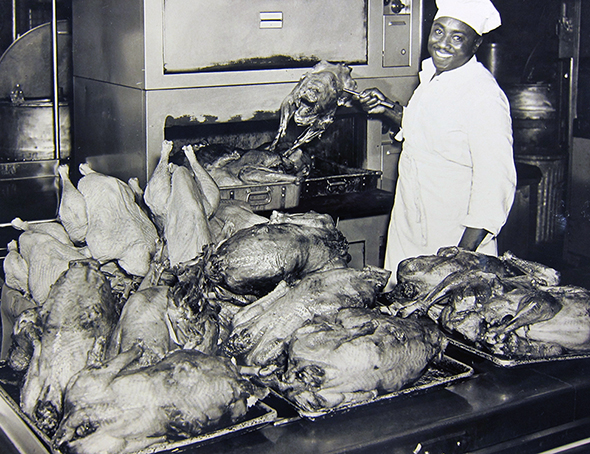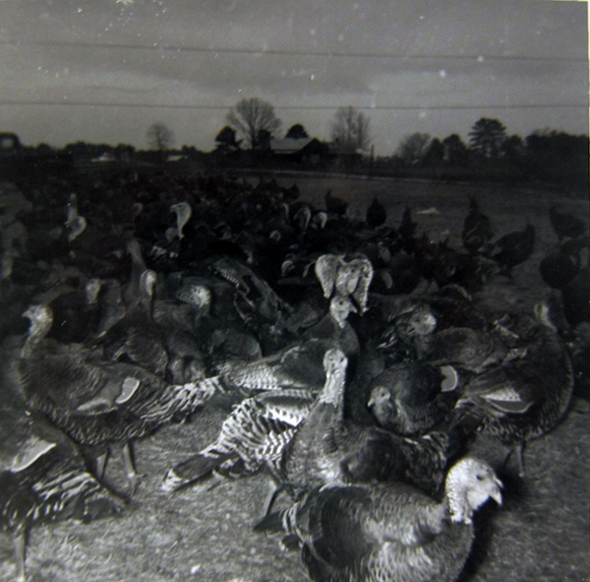How Duke Learned to Cook a Perfect Bird
"From the Archives" highlights how turkey trade group turned to Duke for recipe help

As Duke community members gather with friends and family this week to celebrate Thanksgiving, many will mark the occasion with the holiday's trademark food: turkey.
But how to prepare it? Roasted? Fried? Smoked?

Duke employees tested cooking broad-breasted bronze turkeys at a high temperature (450 degrees) and low temperature (325 degrees) and then carved them to find out how much "shrinkage" in size occurred, leading to fewer portions of meat. While the Turkey Federation asked Duke to use birds from New York, Minah insisted on using turkeys raised in Sampson County, North Carolina, which he noted in correspondence was the region's premiere turkey for best-tasting meat.
After cooking dozens of turkeys, which were served in Duke dining halls, Duke offered up a solution: Roast a turkey at 300 degrees while basting several times, leading to a cost of about 20 cents per two-ounce serving of meat.
Other parts of the turkey were also used, with skin and giblets going into soups and bones into stock. The results of Duke's study were published in the National Turkey Federation's "Turkey Handbook," a promotional guide created by the group for food-serving institutions.
Below, a picture captured at a turkey farm in Sampson County shows broad-breasted bronze turkeys Minah believed to be the best in the region. Photo courtesy of University Archives.
